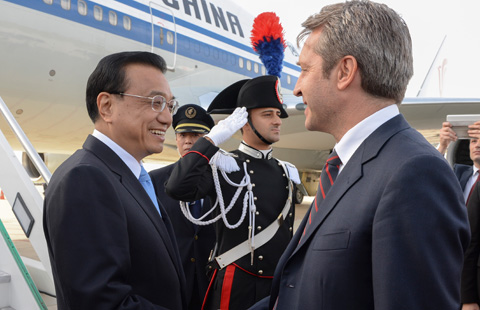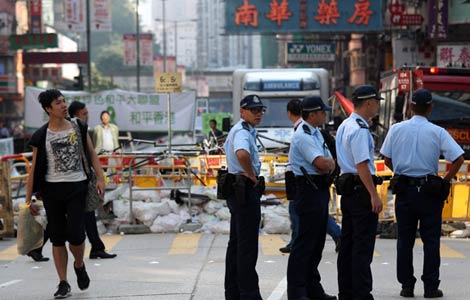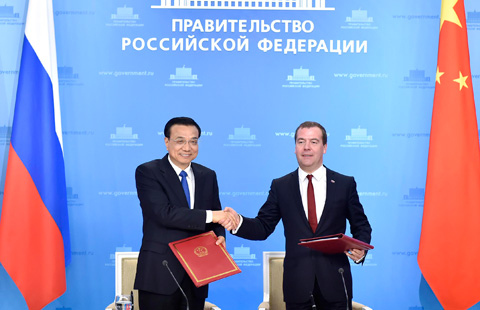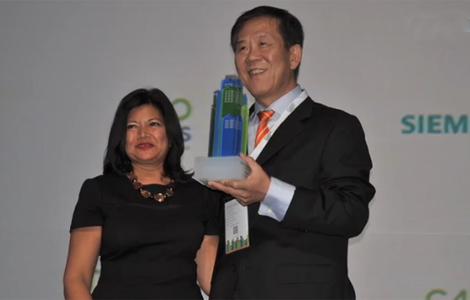Major trade event broadens reach to regions on Maritime Silk Road
Updated: 2014-10-15 08:08
By Zhong Nan and Qiu Quanlin in Guangzhou(China Daily USA)
|
||||||||
This year's Canton Fair will meet the challenges of the 21st Century Maritime Silk Road by developing a more diversified trading platform for countries from the Association of Southeast Asian Nations, South Asia and the Persian Gulf region.
Liu Jianjun, a spokesman for the international fair, which is known as the China Import and Export Fair, said the proposed trading link has already given impetus to upgrading the structure and content of trading.
It is anticipated that about 70,000 - or 35 percent of - exhibitors and buyers expected to attend the fair will come from these regions.
The numbers of visitors from Singapore, Indonesia, Turkey, Sri Lanka and the United Arab Emirates are expected to be higher than in previous years.
More than 1,300 enterprises from ASEAN countries have registered for this year's Canton Fair, an increase of nearly 10 percent from last year.
China has maintained its position as ASEAN's largest trading partner, with trade volume reaching $443.6 billion in 2013, up 11 percent year-on-year.
"Chinese companies will be able to deepen industrial cooperation with these countries along the line of the 21st Century Maritime Silk Road through the fair, particularly in port-related industries, as well as in shipbuilding, marine manufacturing, mining, agriculture, tourism and finance industries," said Liu.
The modern Maritime Silk Road, according to a blueprint drawn up by China and ASEAN members in August, begins in the major port cities of Guangdong and Fujian provinces and heads south into the ASEAN region. From the Strait of Malacca, it then turns west to South Asia, the Persian Gulf region and Europe.
Since all of these regions have long coastlines and important ports, the Maritime Silk Road will help link growth centers such as Shenzhen, Singapore and Istanbul, as well as develop new regional hubs.
"From a long-term perspective, the Maritime Silk Road will fully support trade, State and private investment, industrial productivity and the service industry," said Feng Hao, a researcher at the Institute of Comprehensive Transportation at the National Development and Reform Commission.
Feng said regional connectivity is a top priority for China and its trading partners on the modern Maritime Silk Road, with Malaysia, Indonesia, India, Sri Lanka and the UAE already upgrading their pipelines, port facilities, manufacturing structure, and sea telecommunications. Participating countries will purchase a large number of commodities, goods and natural resources from each other.
With Russia and the European Union having stopped purchasing each other's goods because of political divergence over Ukraine, the number of buyers from both Russia and the EU is expected to increase to offset export shortages of certain industrial products, Liu said.
|
Workers apply finishing touches to the 2014 Canton Fair at the Pazhou International Convention Center on Tuesday in Guangzhou, Guangdong province, which starts on Wednesday. Zou Zhongpin / China Daily |
(China Daily USA 10/15/2014 page6)

 White House also produces harvest joy
White House also produces harvest joy
 Premier Li arrives in Rome for official visit to Italy
Premier Li arrives in Rome for official visit to Italy
 Universal to open theme park in Beijing
Universal to open theme park in Beijing
 Child bride 'marries' 37-year-old
Child bride 'marries' 37-year-old
 New York celebrates 70th Annual Columbus Day
New York celebrates 70th Annual Columbus Day
 HK police vow minimum force to remove protest road barriers
HK police vow minimum force to remove protest road barriers
 China, Russia sign deals on energy, high-speed railways
China, Russia sign deals on energy, high-speed railways
 Future of US-China movies to be discussed
Future of US-China movies to be discussed
Most Viewed
Editor's Picks

|

|

|

|

|

|
Today's Top News
US offers $45m bounty for info on 8 terrorist leaders
Chinese, Italian companies sign $10b
Costco joins Alibaba's online portal
Ebola: Rapid-response team set up
NBA star dishes on 2008 Olympics and Yao Ming
Taiwan photographer depicts NYC on grand scale
Premier Li arrives in Rome for official visit to Italy
Chinese tourists rank US No 3 spot
US Weekly

|

|









